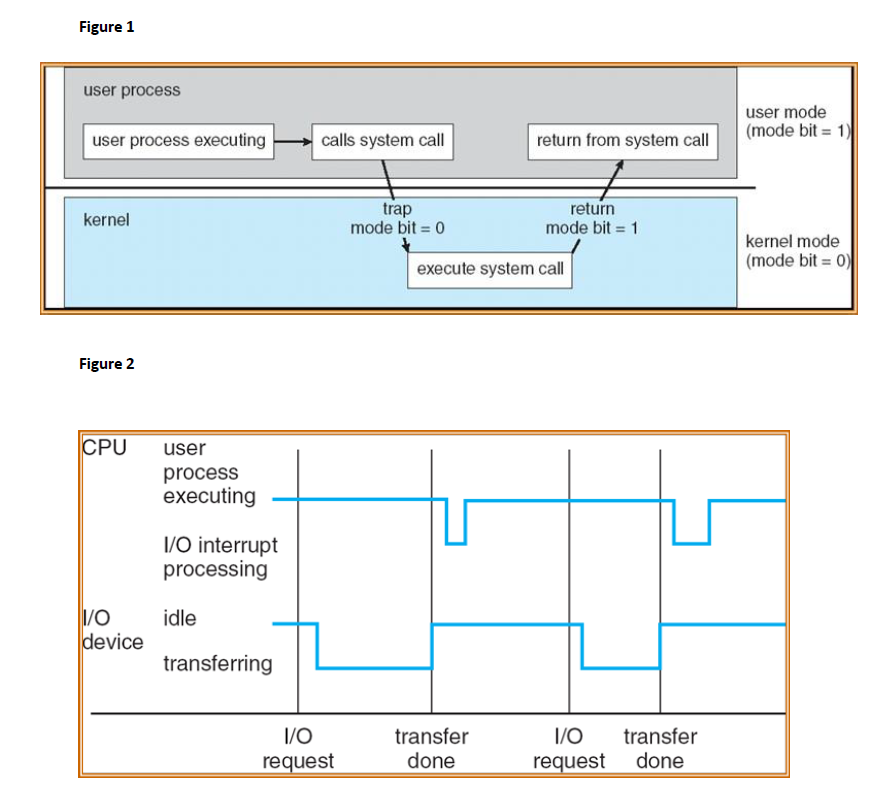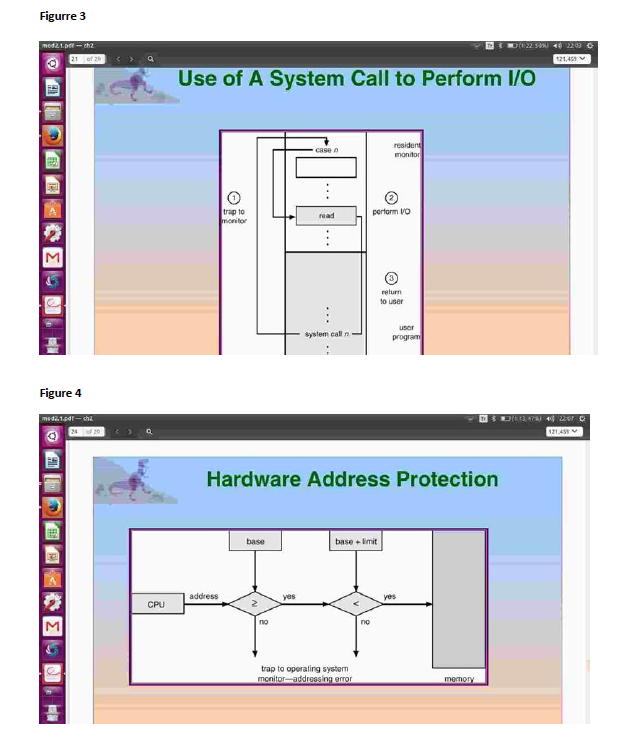What is a Process Control Block (PCB)? Which information does it store? b) Long term scheduler versus short term scheduler versus medium term scheduler. What are their functions? c) How does the system call execute? Can you explain figure1?
What is a Process Control Block (PCB)? Which information does it store? b) Long term scheduler versus short term scheduler versus medium term scheduler. What are their functions? c) How does the system call execute? Can you explain figure1?
Computer Networking: A Top-Down Approach (7th Edition)
7th Edition
ISBN:9780133594140
Author:James Kurose, Keith Ross
Publisher:James Kurose, Keith Ross
Chapter1: Computer Networks And The Internet
Section: Chapter Questions
Problem R1RQ: What is the difference between a host and an end system? List several different types of end...
Related questions
Question
a) What is a Process Control Block (PCB)? Which information does it store?
b) Long term scheduler versus short term scheduler versus medium term scheduler. What are their functions?
c) How does the system call execute? Can you explain figure1?
d) How does the interrupt execute? Can you explain figure 2?
e) How to use system calls to make input/output operations? Can you explain figure 3?
f) In a time-sharing environment, several users share the system simultaneously: How can we reach MM protection? Can you explain figure 4?

Transcribed Image Text:Figure 1
user process
user mode
(mode bit = 1)
user process executing
calls system call
return from system call
return
trap
mode bit = 0
kernel
mode bit = 1
kernel mode
|(mode bit = 0)
execute system call
Figure 2
CPU
user
process
executing
1/O interrupt
processing
1/0
idle
device
transferring
transfer
done
1/O
transfer
done
I/O
request
request

Transcribed Image Text:Figurre 3
mod21.per-ha
21 ef 20
121,45V
Use of A System Call to Perform I/O
residen
monitor
case n
trap to
monitor
pertorm Vo
read
return
to user
usor
syslem call n-
program
Figure 4
121.45
Hardware Address Protection
base
base + Imit
address
yes
yes
CPU
no
no
trap to operating system
monitor-addressing error
memory
Expert Solution
This question has been solved!
Explore an expertly crafted, step-by-step solution for a thorough understanding of key concepts.
Step by step
Solved in 4 steps with 2 images

Recommended textbooks for you

Computer Networking: A Top-Down Approach (7th Edi…
Computer Engineering
ISBN:
9780133594140
Author:
James Kurose, Keith Ross
Publisher:
PEARSON

Computer Organization and Design MIPS Edition, Fi…
Computer Engineering
ISBN:
9780124077263
Author:
David A. Patterson, John L. Hennessy
Publisher:
Elsevier Science

Network+ Guide to Networks (MindTap Course List)
Computer Engineering
ISBN:
9781337569330
Author:
Jill West, Tamara Dean, Jean Andrews
Publisher:
Cengage Learning

Computer Networking: A Top-Down Approach (7th Edi…
Computer Engineering
ISBN:
9780133594140
Author:
James Kurose, Keith Ross
Publisher:
PEARSON

Computer Organization and Design MIPS Edition, Fi…
Computer Engineering
ISBN:
9780124077263
Author:
David A. Patterson, John L. Hennessy
Publisher:
Elsevier Science

Network+ Guide to Networks (MindTap Course List)
Computer Engineering
ISBN:
9781337569330
Author:
Jill West, Tamara Dean, Jean Andrews
Publisher:
Cengage Learning

Concepts of Database Management
Computer Engineering
ISBN:
9781337093422
Author:
Joy L. Starks, Philip J. Pratt, Mary Z. Last
Publisher:
Cengage Learning

Prelude to Programming
Computer Engineering
ISBN:
9780133750423
Author:
VENIT, Stewart
Publisher:
Pearson Education

Sc Business Data Communications and Networking, T…
Computer Engineering
ISBN:
9781119368830
Author:
FITZGERALD
Publisher:
WILEY